Battle of Isaszeg (1849)
| Battle of Isaszeg | |||||||
|---|---|---|---|---|---|---|---|
| Part of the Hungarian Revolution of 1848 | |||||||
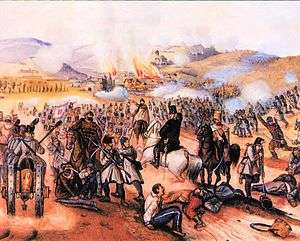 | |||||||
| |||||||
| Belligerents | |||||||
|
| |||||||
| Commanders and leaders | |||||||
|
|
| ||||||
| Strength | |||||||
|
Total: 31,315 men - I. corps: 10 827 - II. corps: 8 896 - III. corps: 11 592 99 cannons Did not participate VII. corps: 14 258 men 66 cannons |
Total: 26,000 men - I. corps: 15 000 - III. corps: 11 000 72 cannons[1] | ||||||
| Casualties and losses | |||||||
| Total: 800–1,000 men |
Total: 373/369 men - 81/42 dead - 196/195 wounded - 96/132 missing and captured[2] | ||||||
The Battle of Isaszeg was a battle in the Spring Campaign of the Hungarian War of Independence from 1848 to 1849, fought on 6 April 1849 between the Austrian Empire and Hungarian Revolutionary Army supplemented by Polish volunteers. The forces Austrians were led by Field Marshal Alfred I, Prince of Windisch-Grätz, while the Hungarians were led by General Artúr Görgei. This battle is one of the engagements of the Hungarian revolutionary and the imperial counter-revolutionary main armies, thus one of the decisive battles of the Hungarian freedom war. The Hungarians were victorious. The battle was one of the turning points of the Hungarian War of Independence, causing a series of setbacks of the Habsburg imperial armies in April–May 1849, forcing them to retreat from the occupied central and western Hungary towards the westernmost border strip of the country, convinced the Hungarian National Assembly to issue the Hungarian Declaration of Independence from the Habsburg Dynasty. It also decided the fate of Windisch-Grätz, who was dismissed from the leadership of the imperial forces in Hungary six days after this defeat, on 12 April 1849.
Background
After the Battle of Kápolna on 26–27 February 1849, the commander of the Austrian imperial forces Alfred I, Prince of Windisch-Grätz, thought that he had destroyed the Hungarian revolutionary forces once and for all. He wrote on 3 March in his report sent to the imperial court in Olmütz, that: "I smashed the rebel hordes, and I will be in a few days in Debrecen (the temporary capital of Hungary)".[3] Despite of this he did not attack the Hungarian forces, because he did not have any reliable information about the number of the Hungarian forces facing him if he crossed the Tisza river. But because of his alertness he lost the opportunity to win the war. While he was deciding whether to attack or not, the Hungarian commanders who were discontented with the disappointing performance of Lieutenant General Henryk Dembiński as high commander of the Hungarian forces, blamed him for the loss of the Battle of Kápolna, started a "rebellion", making a meeting in Tiszafüred, which forced the Government Commissioner Bertalan Szemere to depose the Polish general and put Artúr Görgei instead. This infuriated Lajos Kossuth, the President of the National Defense Committee (interim government of Hungary), wanting to execute Görgei for rebellion. Finally, he was forced by the support of the Hungarian generals for Görgei, to renounce to his plan, and accept the deposition of Dembiński. But Kossuth's antipathy towards Görgei prevented him to accept the decision of Szemere, but he named Lieutenant General Antal Vetter as high commander instead.[4] But Vetter became ill on 28 March, so after two days Kossuth was forced to name Görgei as temporary high commander of the Hungarian main forces.[5] These days and weeks of unrest, uncertainty and changes, could be an excellent opportunity for Windisch-Grätz to cross the Tisza river and defeat the Hungarian army once and for all. But the Austrian field-marshal, paralyzed by an increasing fear of a Hungarian attack, instead of attacking, tried to inform himself about the numbers and strength of the Hungarian armies which were on the eastern bank of the Tisza river, but his spies were unsuccessful in obtaining any information. His fear was fed also by the misleading Hungarian attacks in south against Szolnok on 5 March, and in north where on 24 March the commando of Major Lajos Beniczky, made of 800 soldiers descended on the imperial commando led by Colonel Károly Almásy at Losonc, taking the half of his soldiers as prisoners, which attack was reported by the latter to Windisch-Grätz, that it was made by a 6,000-strong army. Because of these the Austrian marshal scattered his troops in every direction, to prevent a surprise attack, his main concern being a bypass attack from the north, which he feared, will relieve the fortress of Komárom from the imperial siege against, which could cut his support lines.[6]
Meanwhile on 30–31 March the plan for the Spring Campaign of the Hungarian army was made, the most capable generals were named in the lead of the Hungarian army corps, which prepared to attack the Austrians under the lead of the most talented Hungarian general, Atrúr Görgei. The Hungarian army, led by general Artúr Görgei, designated to start the attack to liberate the Hungarian lands which lied to west from the Tisza river (consisting of much of the territory of the Kingdom of Hungary, occupied by the Habsburg forces), numbered 47,500 soldiers and 198 cannons, organized in four army corps, led by General György Klapka (I. corps), General Lajos Aulich (II. corps), General János Damjanich (III. corps) and General András Gáspár (VII. corps). The imperial forces led by Alfred I, Prince of Windisch-Grätz numbered 55,000 soldiers and 214 cannons and rockets, organized in three army corps, led by Lieutenant Field Marshal Josip Jelačić (I. corps), Lieutenant General Anton Csorich (II. corps), General Franz Schlik (III. corps), and the division led by Lieutenant General Georg Heinrich Ramberg.[7] The Hungarian plan of the Spring Campaign, elaborated by Antal Vetter, was that the 7th corps, under the lead of András Gáspár, had to attract the attention of Windisch-Grätz on his troops by making and attack from the direction of Hatvan, while the other three corps (I., II., III.) would encircle the Austrian forces from South West, and cut them from the capital cities (Pest and Buda). According to the plan, the 7th corps had to stay at Hatvan until 5 April, then on 6th it had to reach Bag. The attack on the Austrian forces had to occur on 7 April at Gödöllő, from two directions, while the I. corps would advance to Kerepes, and fall on the Austrians from behind, preventing them to retreat towards Pest.[8] The key of the plan was that the Austrians would not discover the Hungarian movements until they completed the encirclement.[9]
Prelude
On 2 April, the preliminary fighting began when the Hungarian VII. corps met with the III. Austrian corps led by Franz Schlik at the Battle of Hatvan. Schlik wanted to obtain for Windisch-Grätz information about the positions and numbers of the Hungarian army, moved towards Hatvan, but there he was defeated by the VII. Hungarian corps commanded by András Gáspár, and had to withdraw without accomplishing his purpose. Windisch-Grätz thought that Schlik met at Hatvan the main Hungarian army, so he continued to have no correct knowledge about the Hungarian army's movements.[10]
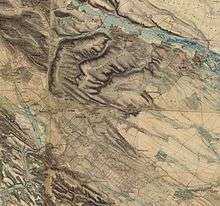
In the meanwhile the other three Hungarian corps moved, according to the campaigns plan towards South-West, and, on 4 April, met with the I. imperial corps led by Josip Jelačić in the Battle of Tápióbicske, and defeated it. György Klapka made a big mistake, by giving the order to attack Tápióbicske, because he unrevealed where the Hungarian troops were. Because of this, Görgei was uncertain what to do, but finally he decided his troops to continue their movements according to the initially made plan.[11]
But after the fighting on 4 April, Jelačić gave false information to Windisch-Grätz, about a victory over the Hungarians. This misled the field marshal, who did not understand what was happening on the south-western front, and resulted in him giving Jelačić, the Ban of Croatia, the order to pursue the Hungarians, who instead of fleeing were actually closing in around Windisch-Grätz's headquarters at Gödöllő, while he was planning how to attack on 5 April the Hungarian forces which he thought to be in the Hatvan-Gyöngyös-Jászárokszállás triangle.[12] On 5 April Windisch-Grätz sent to Hatvan, two companies of lancers, two companies of light horse and two rockets under the command of Lieutenant General Franz Liechtenstein in reconnaissance, but after a fight with four companies of Hungarian hussars, he retreated, so again Windisch-Grätz did not learn anything about the exact location of where the Hungarians were.[13] He had no idea, and feared that the enemy's main forces would get around him from the south, cutting his lines towards the capital, or from the north, and would liberate the fortress of Komárom from the imperial siege. Thus he sent the III. corps of Franz Schlik to Gödöllő and that of Jelačić (I. corps) to south to Isaszeg. Two of the brigades of the II. corps led by Lieutenant General Ladislas Wrbna were sent to Vác and ordered to Lieutenant General Georg Heinrich Ramberg to join him there with his brigade, two brigades remained in Pest.[14] So Windisch-Grätz scattered his forces across a distance of 54 kilometers, which made it impossible for his troops to effectively help each other (some of the troops were at more than a day distance from each others) in the eventuality of a battle.[15]
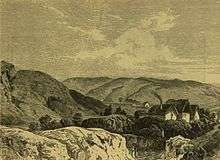
While the Hungarian front line was only 22 kilometers long, during the battle Görgei could only deploy two thirds of his troops in any point. This followed from the orders of Görgei which he sent to his generals detailing where to move in order to start the attack on 7 April, the designated day of the battle in Görgei's plans. Gáspár was ordered to move from north and occupy Bag, Damjanics's III. corps had to move forward from Tápiószecső, occupying Isaszeg, Klapka's I corps also had to move towards the same place, while one of his brigades had to take Pécel, while Aulich's II. corps had the order to position at Dány and Zsámbok.[16] Görgei's plan was that Gáspár to hold the troops of the left wing of the imperials, while the other three corps to attack the Austrian left wing at Isaszeg, and push them northwards from Pest, enabling with this the liberation of the Hungarian capital on the Eastern bank of the Danube. With this the Hungarian commander forced Windisch-Grätz to choose between two bad options: to accept a battle where the Hungarians were in superiority, or to retreat to Pest, where he could fall in a mouse-trap, because the city was hard to defend, being open to attacks from three directions, and having only one, unfinished bridge (the Chain Bridge), to cross his troops on the other side, to Buda, if he had to retreat, task which would have been impossible to finish it with success. Windisch-Grätz chose the lesser of two evils.[17]
On the morning of 6 April at 6 o'clock, the Austrian troops were retreating towards Gödöllő. Jelačić arrived to Isaszeg at 11 o'clock and put his camp on the heights near the village. He reported to Windisch-Grätz that Hungarian troops are following him from south. The field marshal demanded him to learn the number of the troops, and if he has enough forces, to enter in battle with them.[18]
Battle
The date of the battle was planned for 7 April, and so on 6 April Görgei gave orders for his troops to move and occupy the designated form up points in order to start the battle on the next day, but when the troops moved on the places where they were supposed to wait, they encountered enemy soldiers and as a result the battle began early. The unexpected start of the battle caught both commanders by surprise, causing haste and confusion.[19]
While the Hungarian high commander, General Görgei, was in Kóka (to 14.81 km from Isaszeg), Gáspár moved with his 14 258 troops and 66 cannons to Aszód, Tura and Bag on the bank of the river Galga at 12:30, sending colonel György Kmety with a division to occupy Hévízgyörk, where they stumbled on the cavalry of Franz Schlik, and after the imperials retreated, the Hungarians took stand, without interfering in the battle after it. Gáspár did not move moved his troops forward even after hearing the gunfire of the battle, saying that he was obeying the orders he had received from Görgei a day before, regarding 6 April. With this his corps which numbered the most soldiers from the corps of the Hungarian army (I.-10 817, II.-8896, III.-11 592 men) was removed from the battle.[20]
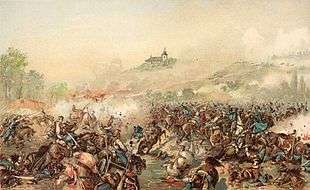
At the same time the two corps of Klapka and Damjanich arrived in the vicinity of Királyerdő (Kings Forrest), which lied in front of Isaszeg from East. Here the troops of Damjanich attacked the rear brigade of Jelačić's I corps, chasing it out of the forest, which retreated to Isaszeg, not before setting fire to the forest from several places. Than the troops of Klapka attacked the brigade of Major-General Franz Adam Grammont von Linthal, chasing it towards Isaszeg, and the Hungarian 34th and 28th battalions commanded by István Zákó and János Bobich entered in the above named locality. But here the superiority of Jelačić's three foot and three horse brigades, caused to the two battalions heavy losses and forced them to retreat towards the woods. The attack of the Austrian cuirassiers was finally stopped and repelled by the fusillade of Klapka's 44th and 47th battalions, than they were attacked also from the side by the brigade of Bódog Báthory Sulcz, and finally the two Hungarian battalions chased the Austrian kaiserjägers out from Királyerdő woods. But the Hungarian troops were prevented to go out from the woods by the fusillade of the Croatian seressaners, positioned on a height near Isaszeg.[21]
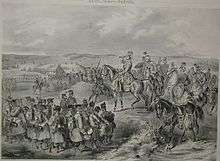
At 2 o'clock the units of the III. corps of Damjanich crossed the wood, and after chasing out from the forest the brigade of Daniel Rastić, positioned themselves at the Western end of it. Rastić retreated across the Rákos creek, where they, together with the Schultzig-division, sent in help by Jelačić, repelled the attack of the Zákó-brigade of Klapka's corps. This event set in disarray also the Bobich-brigade from the same corps, causing them to retreat.[22] In these moments Klapka, a very capable Hungarian general, one of the heroes of the Hungarian freedom war, inexplicably lost his head and let his commanders on their own. One of them, János Bobich, started an attack, but was repelled by the fusillade of the enemy.[23] Damjanich sent a brigade to help Klapka's beset troops, and sent another brigade to the northern end of the forest, while he positioned his cannons on high ground, and his cavalry on the nook of the forest, between his and Klapka's troops, right in the middle of the Hungarian front. Damjanich intended to attack with the purpose to relieve Klapka's beset troops, but the latter, feeling that his situation is hopeless, started to withdraw his troops, before the brigade, sent in aid by Damjanich, arrived. Damjanich remained in position, and when he saw the Austrian troops sent to pursue Klapka, he sent one of his best units, the 9th battalion, together with the 3. battalion, to help Klapka's troops. Klapka's two brigades (Zákó, and Bobich), together with Damjanich's two battalions counterattacked, and pushed Jelačić's troops on the heights on the rihght banks of the Rákos creek.[24]
Meanwhile, the II. corps of Aulich stood still in Dány and Zsámbok, despite he received a runner from Damjanich to hurry to the battlefield, but he wanted to remain faithful to Görgei's orders from a day before. But finally he ordered to his troops to depart towards Isaszeg, after the chief of the general staff, Lieutenant-Colonel József Bayer, hearing the cannonade, ordered him to do so.[25]

At 3 o'clock all the four Hungarian army corps were fighting without coordination, as well as their commanders. Görgei was still in Kóka, without any knowledge about the events that started that day. He only knew what happened at the beginning of the battle: that the Croatian troops retreated from Királyerdő, fleeing from the Hungarians lighting the forest, and nothing else. So he was preparing for the battle that he thought would start in the next day. At this point one of the Hungarian hussars arrived and informed him that the battle begun and already is about to be lost. Hearing this, Görgei mounted and hurried towards the battle scene.[26]
In the meanwhile Damjanich's troops continued their attack against the heights defended by Jelačić's troops, but they were caught by surprise from north by the division of Franz Liechtenstein sent in aid of Jelačić by Schlik, according to the order of Windisch-Grätz, who understood, that Gáspár will not attack in that day.[27] Damjanich did not secured his northern flank because he thought that Gáspár would attack, holding all of Schlick's troops in position. Now the Hungarian III. corps was caught between two fires, forcing Damjanich to retreat to Királyerdő, recuperate the lost terrain there, and defend his positions from here from the attacks of the Austrian infantry. At 4 o'clock, Klapka's two fighting brigades, could not continue the fight alone, so they too retreated in the forest. Jelačić ordered a general attack against the Hungarians from all directions. This moment was a critical moment of the battle, because on the battle front stood 26 000 imperial troops against 14 000 Hungarians, with only a half of the Hungarian artillery. Aulich's troops were in Dány, while Gáspár did not move his VII. corps. So the Hungarians were forced to defend their positions. [28]
When Görgei arrived, at 4 o'clock, at the eastern edge of the Királyerdő forest where he contacted Aulich's corps, which had just arrived and was about to join the battle. Here he also received news from András Gáspár (commander of the VII. corps), who informed him that he had occupied his position on the Galga rivers line. Here Görgei made a mistake, because he did not send the order to Gáspár to advance, thinking that he was already doing this, while the commander just stood on his position waiting for new orders. Görgei in his memoirs wrote that he was misinformed by the hussar who brought Gáspár's report, saying that his commander was advancing towards Gödöllő. Hearing this, Görgei thought that he would easily encircle and destroy the main imperial troops, if Gáspár's corps attacked from the north-west the Austrians, as Damjanich's troops would hold the line in the forest, and Klapka would attack and chase the Austrians to the north from Isaszeg, from where he thought that the VII. corps was nearing towards the battlefield.[29] But the plan failed because Görgei failed to send an envoy with the order to advance, and Gáspár, in a moment of indecision chose to remain in his position despite of hearing the cannonade. Had he taken the opportunity, it is possible that the war could have been decided in the favor of the Hungarian cause. László Pusztaszeri explains that Gáspár's inactivity was due in part to his pro-imperial feelings,[30] and after the Declaration of the Dethronement of the Habsburg Dynasty by the Hungarian Parliament on 14 April 1849, András Gáspár asked for permission to take leave, and ultimately never came back to serve in the Hungarian army.[31]
With the arrival of Görgei and Aulich the problems did not stop for the Hungarian army, because Klapka was still retreating, and the places he left empty on the margins of the forest, could have been occupied by the Austrian troops, cutting the Hungarian army in two. So Görgei distributed the battalions of the II. corps in the following way among the endangered zones: four battalions to the right wing to help Damjanich, two in the middle to fill the gap created by Klapka's retreat, and the 61st battalion to help Klapka in the left wing. Görgei also went on the left flank to meet Klapka. When they met, Klapka still wanted to continue his retreat, saying that his troops ran out of their cartridges, and they are very tired, so "today is impossible to obtain the victory, but tomorrow will be possible again". Then Görgei replied: "[...] the quickness of your infantries retreat shows that they are not so tired, so they can try some bayonet attacks, and for these they have enough cartridges even if they really used them all. Today we have to win, or we can go back to the swamps of the Tisza! These two solutions exist, we have no third. Damjanich still resists on his post, and Aulich advances [in this right moment]: we must win!"[32] These words convinced Klapka to order to his troops to move forward again and occupy Isaszeg.[33]
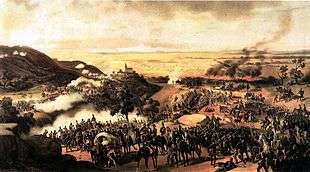
Görgei than hurried to the right flank, and told Damjanich that he convinced Klapka to hold the retreat and to attack. Damjanich showed no confidence that Klapka will accomplish what Görgei ordered him, but obeyed to his commander and continued to fight against Liechtenstein's attacks. The arrival of Aulich's four battalions created confusion, because the III. corps troops thought that they were Austrians, and they started to shoot against each other, but they were stopped by Damjanich and Görgei shortly after. The long fights on the right flank disintegrated Damjanich's battalions, so he could not use the numerical superiority of his infantry (10 battalions) to start an attack against the Austrians five infantry battalions, which faced them. This task was made impossible also by the numerical superiority of the Austrian cavalry, which had 34 companies against 17 on the Hungarian side, and artillery, which had twice as many cannons as Damjanich. So on the right flank nothing special happened until around 23 o'clock.[34] But at this time the 25th, 48th, 54th, 56th battalions of Aulich's II. corps, together with Damjanich's III. corps, pushed the enemy towards Gödöllő.[35]
But in the left flank the victory came more earlier, because around 7 o'clock the troops of Klapka and Aulich finally started the attack, they managed to came out of the Királyerdő forest, with the help of the Hungarian cannons, conquered the burning Isaszeg with a bayonet attack, than they also chased away the imperial troops from the right banks of the Rákos creek. Jelačić's cavalry made of the cuirassiers led by Major General Ferenc Ottinger, crossed the Rákos creek starting a counter attack, but the Hungarian artillery and the Hungarian cavalry made mainly by the hussars of Colonel József Nagysándor chased them back. The chief of the general staff, József Bayer ordered to the I corps to chase the enemy, and to advance to Kerepes, but Klapka refused, pointing at the fatigue of his troops. The hastily retreating imperials were only chased by the division of György Kmety, but he could not reach them.[36]
So in the end, from the Hungarian corps commanders it was Klapka who, who despite his initial "shortstop", decided the fate of the battle for the Hungarians. Windisch-Grätz, who at 7 o'clock thought he won the victory, around 9 o'clock he had to order his troops to retreat. Even after the battle was decided by the I. corps attack, for a while Görgei was uncertain about its outcome, because in the right wing and the center the fighting continued until late in the evening. Only when he moved to the left flank did he learn from Aulich that Jelačić's I corps had begun retreating towards Gödöllő. Only after this did he realise that the Hungarians had won the battle.[37]
Aftermath
The battle of Isaszeg was after the Battle of Kápolna the second confrontation between the Hungarian revolutionary and the Habsburg imperial armies. Although it was not a crushing defeat for neither of the combatants, it influenced the moral of the victors and the defeated as well. While the Hungarian generals, except Ándrás Gáspár, showed the capability of taking decisions when they were on their own, the imperial generals, except Franz Schlik failed from this point of view. Windisch-Grätz misunderstood the situation completely before the battle, scattering his troops, so the II. corps commanded by Anton Csorich and the division of Georg Heinrich Ramberg could not participate in the battle. Although Görgei had his mistakes too, thinking that Gáspár joined the battle, but in this unexpected battle, he succeeded in aligning the majority of his troops and to win the battle.[38] The battle of Isaszeg was the opposite of the Battle of Kápolna, where in a similar situation, Henryk Dembiński the Hungarian commander failed to gather his troops on the battlefield, and Windisch-Grätz succeeded this task, winning the battle.[39]
The most important result of the battle was that the military initiative was taken for two months by the Hungarian army, while the Habsburg army was defeated in a series of battles (Battle of Vác, Battle of Nagysalló, Battle of Komárom, Siege of Buda), and forced to retreat towards West. Also the Battle of Isaszeg played a decisive role in the dismissal of Windisch-Grätz from the lead of the Habsburg armies by the emperor on 12 April, who named Feldzeugmeister Ludwig von Welden in his place, but until his arrival his duties were fulfilled by Josip Jelačić,[40] but these changes in the command of the army did not produce a change in the military situation for the Austrian side, with new defeats, and the retreat from almost all the territories which they occupied in Hungary.[41]
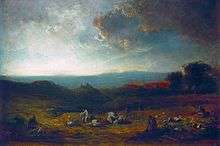
In the day after the battle of Isaszeg, Lajos Kossuth, the President of the National Defense Committee arrived to Gödöllő, and moved in the Grassalkovich-Palace, which was the headquarters of Windisch-Grätz until a day before. Here he formulated the Hungarian Declaration of Independence, which declared the deposition of the House of Habsburg from the leadership of Hungary, and issued Hungary's total independence.[42] The independence was declared on 14 April 1849 in Debrecen, but its plan was made in Gödöllő, as the result of the victories of the Spring Campaign, mostly the Battle of Isaszeg.[43]
Also in Gödöllő was formulated the plan of the second phase of the Spring Campaign. This plan was based on making the imperial high commanders to believe that the Hungarian army wants to liberate the capitals of Hungary: Pest and Buda, while their main forces moved through North around up of the Danube, and liberate the Hungarian fortress of Komárom, besieged from January by the imperial forces. While the II. corps led by Lajos Aulich, remained in front of Pest, with the duty to mislead the main imperial forces, making such brilliant military maneuvers, that the Austrian commanders thought that the Hungarian main forces are still in front of the capital planning to make a frontal attack against it; the I., III. and VII. corps accomplished the campaign plan perfectly, and on 26 April they relieved the fortress of Komárom, forcing with this also the main Austrian forces which waited in the capitals (except 4,890 soldiers who were let to hold in the fortress of Buda), to retreat near the Austrian border, thus liberating almost all Hungary from the Austrian occupation.[44]
Legacy
The famous Hungarian Romantic novelist Mór Jókai made the Hungarian Revolution and Independence War the subject of his popular novel A kőszívű ember fiai (literally: The Sons of the Man with a Stone Heart, translated into English under the title: The Barons's sons) In the XIX. and XX. chapters, the Battle of Isaszeg is vividly presented as one of the main plot events of the novel, in which several of his main characters appear as fighters in the ranks of both the Hungarian and the Austrian army.[45] This novel was also adapted, in 1965, to a movie, having the same title (A kőszívű ember fiai) as the novel, including the Battle of Isaszeg as one of its most important scenes. In the present the battle is reenacted every year at its anniversary, 6 April, at Isaszeg and its environs.[46]
Notes
- ↑ Hermann 2013, pp. 20–23.
- ↑ Hermann 2013, pp. 25.
- ↑ Hermann 2001, pp. 244.
- ↑ Hermann 2001, pp. 244.
- ↑ Hermann 2001, pp. 263.
- ↑ Hermann 2001, pp. 271.
- ↑ Hermann 2001, pp. 268–269.
- ↑ Hermann 2001, pp. 270.
- ↑ Hermann 2001, pp. 270.
- ↑ Hermann 2013, pp. 14–16.
- ↑ Hermann 2004, pp. 218.
- ↑ Hermann 2013, pp. 17–18.
- ↑ Hermann 2001, pp. 274–275.
- ↑ Hermann 2001, pp. 275.
- ↑ Hermann 2001, pp. 275.
- ↑ Hermann 2001, pp. 275.
- ↑ Pusztaszeri 1984, pp. 252.
- ↑ Pusztaszeri 1984, pp. 252.
- ↑ Hermann 2004, pp. 224, 228.
- ↑ Hermann 2004, pp. 224, 229.
- ↑ Hermann 2004, pp. 225.
- ↑ Pusztaszeri 1984, pp. 255.
- ↑ Hermann 2004, pp. 226.
- ↑ Pusztaszeri 1984, pp. 255–256.
- ↑ Hermann 2004, pp. 226.
- ↑ Hermann 2004, pp. 226.
- ↑ Hermann 2004, pp. 226.
- ↑ Pusztaszeri 1984, pp. 256–257.
- ↑ Hermann 2004, pp. 226.
- ↑ Pusztaszeri 1984, pp. 258.
- ↑ Bóna 1987, pp. 157.
- ↑ Hermann 2004, pp. 227.
- ↑ Hermann 2004, pp. 227.
- ↑ Hermann 2004, pp. 227.
- ↑ Pusztaszeri 1984, pp. 259.
- ↑ Pusztaszeri 1984, pp. 259.
- ↑ Hermann 2004, pp. 227–228.
- ↑ Hermann 2013, pp. 25–26.
- ↑ Hermann 2013, pp. 26.
- ↑ Hermann 2001, pp. 285.
- ↑ Hermann 2001, pp. 314.
- ↑ G. Merva 2007, pp. 282.
- ↑ Pusztaszeri 1984, pp. 266-267.
- ↑ Hermann 2001, pp. 282–295.
- ↑ Jókai 1900, pp. 242-253.
- ↑ Hadak Útja Lovas Sportegyesület 2015. Avagy ez történt eddig, ebben az évben….
Sources
- Hermann (ed), Róbert (1996). Az 1848–1849 évi forradalom és szabadságharc története ("The history of the Hungarian Revolution and War of Independence of 1848–1849) (in Hungarian). Budapest: Videopont. p. 464. ISBN 963-8218-20-7.
- Bóna, Gábor (1987). Tábornokok és törzstisztek a szabadságharcban 1848–49 ("Generals and Staff Officers in the War of Independence 1848–1849") (in Hungarian). Budapest: Zrínyi Katonai Kiadó. p. 430. ISBN 963-326-343-3.
- G. Merva, Mária (2007). Gödöllő története I. A kezdetektől 1867-ig ("The History of Gödöllő. I. From the Beginnings until 1867") (in Hungarian). Gödöllő: Gödöllői Városi Múzeum. p. 473. ISBN 978-963-86659-6-6.
- Hermann, Róbert (2001). Az 1848–1849-es szabadságharc hadtörténete ("Military History of the Hungarian War of Independence of 1848–1849") (in Hungarian). Budapest: Korona Kiadó. p. 424. ISBN 963-9376-21-3.
- Hermann, Róbert (2004). Az 1848–1849-es szabadságharc nagy csatái ("Great battles of the Hungarian War of Independence of 1848–1849") (in Hungarian). Budapest: Zrínyi. p. 408. ISBN 963-327-367-6.
- Hermann, Róbert (2013). Nagy csaták. 16. A magyar függetlenségi háború ("Great Battles. 16. The Hungarian Freedom War") (in Hungarian). Budapest: Duna Könyvklub. p. 88. ISBN 978-615-5129-00-1.
- Jókai, Maurus (1900). The Baron's Sons. London: The Walter Scott Publishing CO. LD. p. 378.
- Pusztaszeri, László (1984). Görgey Artúr a szabadságharcban ("Artúr Görgey in the War of Independece") (in Hungarian). Budapest: Magvető Könyvkiadó. p. 784. ISBN 963-14-0194-4.
External links
- (Hungarian) Video animation about the Battle of Isaszeg
- (Hungarian) Modern day reenactment of the battle, on 06.04.1014
